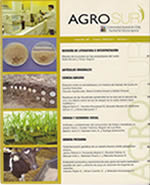Plant community patterns in California oak woodlands
Main Article Content
Abstract
To identify and characterize plant communities in California oak woodlands we sampled 455 100- m transects, both in the Coast Range (CR) and the Sierra Nevada Foothills (SNF). Sampling points were established at 5-m intervals. Woody and herbaceous species were used to analyze vegetation structure and diversity. Of the 455 transects 257 included woody plants. Of a total of 53 woody and 254 understory species only 14 woody and 60 understory species were present in at least 3% of the transects. We performed a Permutational MANOVA with these species to analyze similarities. Ordination was performed using non-metric multidimensional scaling (NMDS). Manhattan distance was used to obtain dissimilarity matrices. Monte Carlo tests using randomized versions of the data sets were used as null models. Observation scores of the NMDS axes were used to perform cluster analyses. Our results indicate significant differences (P<0.05) in the vegetation between CR and SNF. Differences in herbaceous composition are also significant (P<0.05) when comparing grasslands and woodlands. Woody species richness is higher in the CR than in SNF, and herbaceous species richness is higher in woodlands than grasslands. The highest alpha diversity is found in the woodlands of the CR. NMDS indicates that the assemblage of species in California oak woodlands is not random. The 257 transects with woody and herbaceous species were grouped in 15 clusters based on the species composition. The clusters represent 11 oak subseries.

